Professional Resume Margins (Learn the Correct Margin Size)
Here's why resume margins matter. Do you ever wonder if your resume is formulated properly? When you create a resume, the margins on your resume really do matter in the professional industry.
In this guide, we will cover standard resume margins so you know how to properly create your own resume.
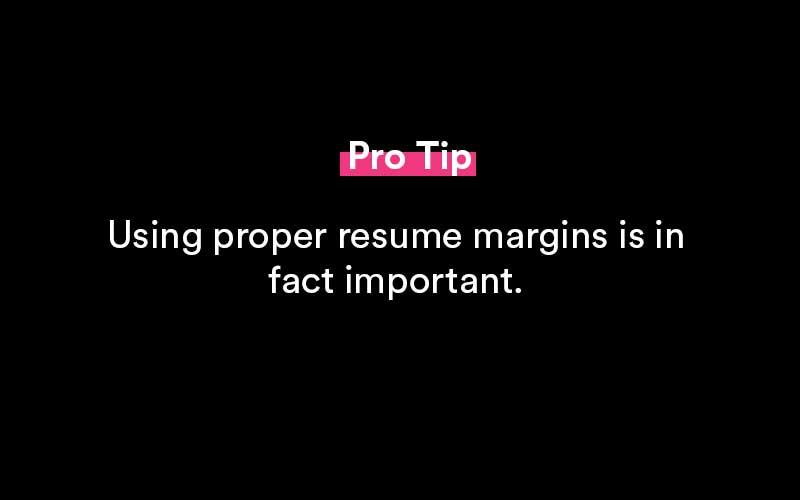
What are margins for a resume?
In terms of writing a resume, the margins on your resume really do matter.
Where many of us turn to templates available, the resume margins are a part of formatting that is often overlooked.
The margin size needs to fall into the appropriate measurement for resume margins. If it is not, there are hiring managers out there that might immediately dismiss your resume.
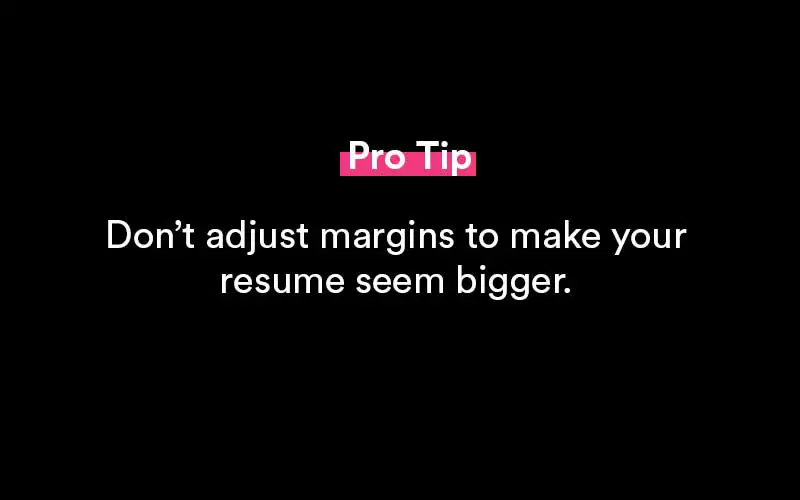
Make your resume right to impress the hiring managers!
Resume formatting margin settings are fairly specific. In case you aren't familiar, the margins are the white space on the edges of the paper. This includes the top, bottom, and sides of the resume.
It seems like such a trivial thing but the resume margins really may make or break your document when it's in the hands of the reviewer.
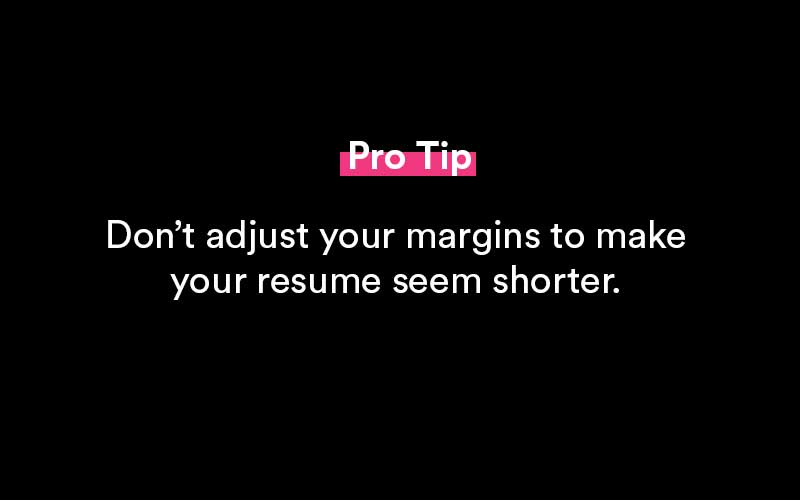
How this impacts readability
Resume formatting is primarily done so to provide consistency. However, this approach for both standard resumes and creative resumes are used to approve readability.
When the formatting is consistent, it makes it far easier for that hiring manager looking through the piles of resumes to actually read and notice the details.
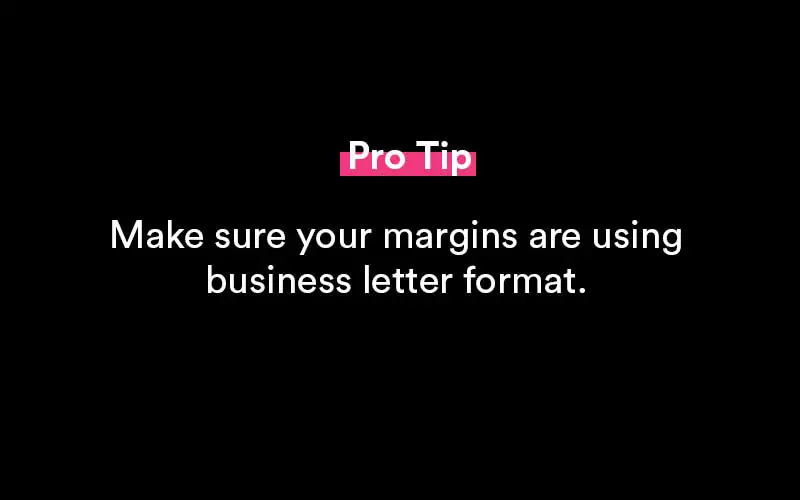
Some would tell you that it actually works in your favor to use standard resume formatting tips in order to not be tossed aside.
The key focus behind these formatting elements is to make your resume look absolutely professional to the person reading it but also make it easily readable at the same time.
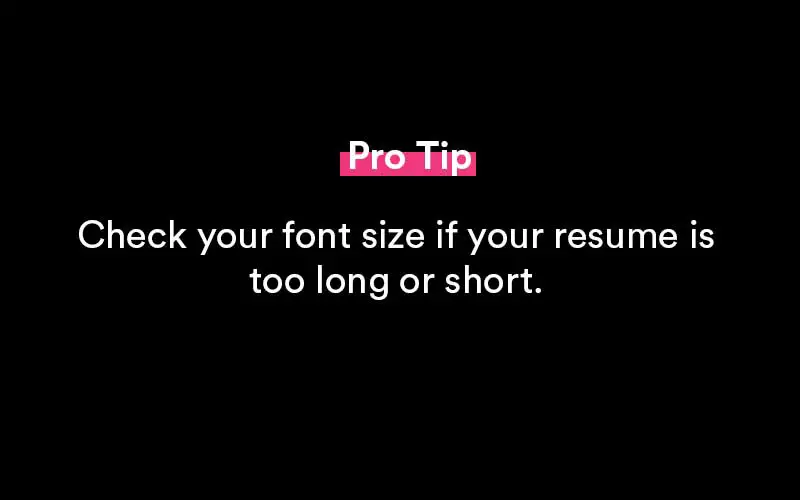
What should margins be on a resume?
Whether you make your resume in Microsoft Word, Google Docs, or some other specialty resume tool, the margins need to be consistent.
If you use a pre-made template, it is most likely correct in Word and Google Docs but you should check the resume margins to be sure.
The standard margins for a resume in both Word and Google Docs is 1-inch on all sides.
This is easy to set but your resume margins need to fall into this parameter, or a similar style so that your resume is easily readable.
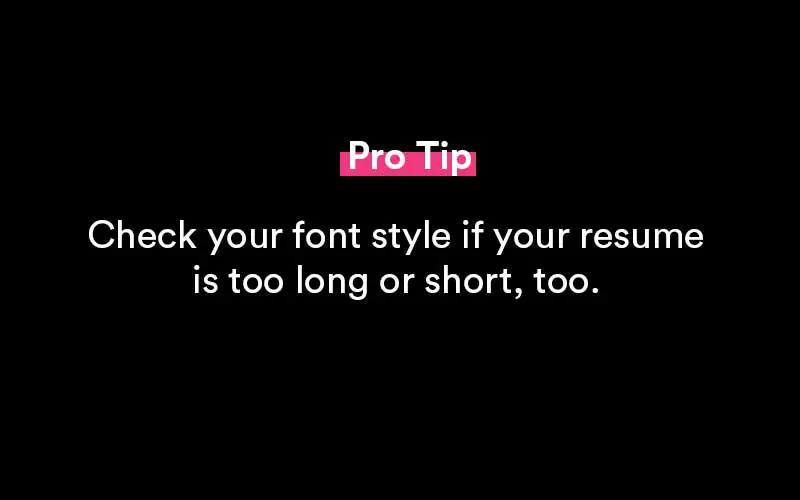
While a single inch is standard all around the document, this can be slightly adjusted if you know what to watch for and what to avoid.
Avoid these common mistakes
Some people stick to a creative resume because they think it will make them stand out.
While this can certainly be the case in some instances, it is not always the desired effect.
When writing your resume, avoid these common mistakes.
- Don't get too wordy.
- Margin size and other formatting matters.
- Be sure everything is professional, including your email address.
- Stick to a simple font like sans serif - don't make it outdated or overly fancy.
- Always check spelling and grammar.
- Avoid bullet points of your duties and focus on short snippets and accomplishments.
You want to provide just the right amount of information without seeming forced. Always check the formatting and make it reader-friendly.
How to set proper margins
Setting appropriate margins can be done in any program. Even if you hire a resume writer, you still need standard resume margins for consistency.
The margin size will either add to or reduce the white space around the edges of your paper and will make your resume reader-friendly when done correctly.
One-inch margins are the traditional size to make your resume look professional and tailored.
You can set custom margins in word but you shouldn't really need to. Page margins often default to half an inch. For resume format, you can change the page setup to get it right.
Here are some helpful instructions for setting resume margins in various resume selections.
Setting margins in Microsoft Word
Microsoft Word is perhaps one of the most user-friendly resume creators. They do offer a myriad of resume templates but always be sure to check resume margins.
Remember that the resume margin standard for both creative resumes and standard 1-inch margins.
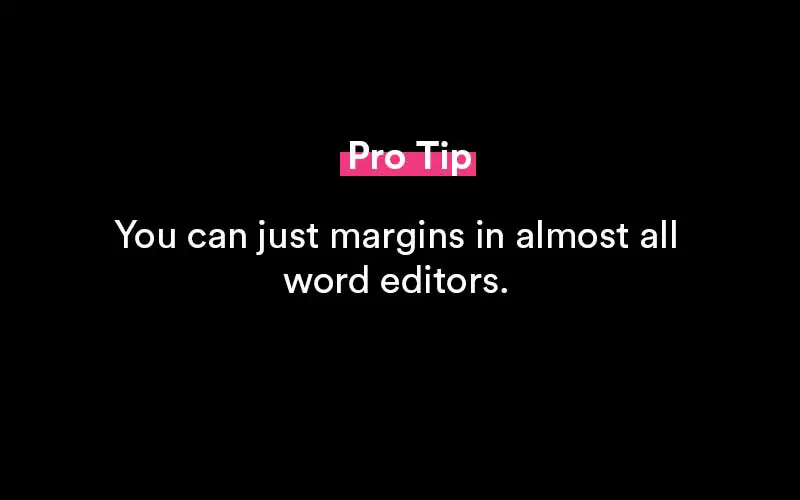
The left and right margins as well as the top and bottom margins create a traditional resume that you can personalize to fit your own style and needs on a professional resume.
Setting your margins resume style is pretty easy in word with formatting and layout tools.
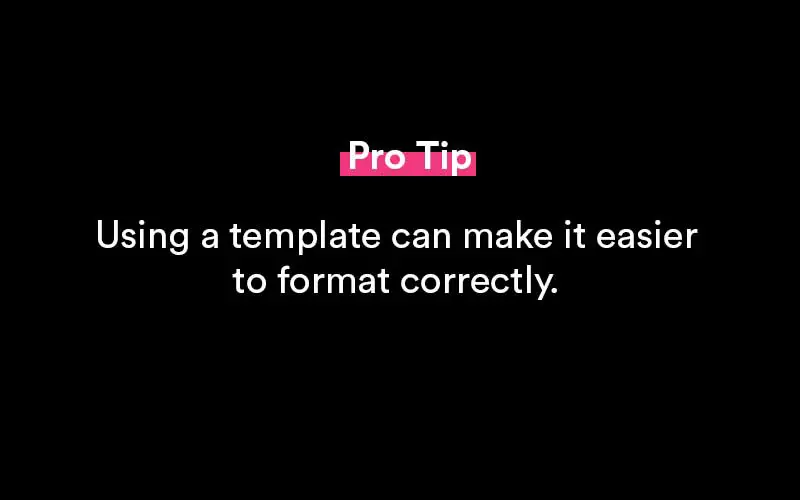
Follow these steps to set margins in Microsoft Word.
- In Word, click on layout menu.
- Find "margins", which should be the first option.
- You can create custom margins or just use one inch from the drop-down menu.
- If you're just short of having everything fit onto one page, you can shrink the margins to make the text on your resume all fit. You might also be able to adjust font size but be careful about doing so.
- Margins can make the white space larger or smaller or make the document easy to read so be sure to use the best margins to keep the document simple.
Page margins for a resume are traditionally set to 1 inch but you might be able to make slight adjustments as long as you keep the general form.
Setting margins in Google Docs
Now, let's cover how to accomplish the best margins in a platform like Google docs.
Margins in Google docs are pretty easy to set so your resume margin will be good to go in no time.
- In Google docs, click on the File tab.
- In the dropdown menu, select Page Setup.
- In the window, choose your margins for each part of the document. Remember that resume margins are traditionally one inch all around the resume.
- In this platform, you can edit each of your margins individually so be sure to set them all.
It's incredibly simple to set the resume margins in this platform as well. Your resume will look professional and well-done with a minimal amount of effort on your part.
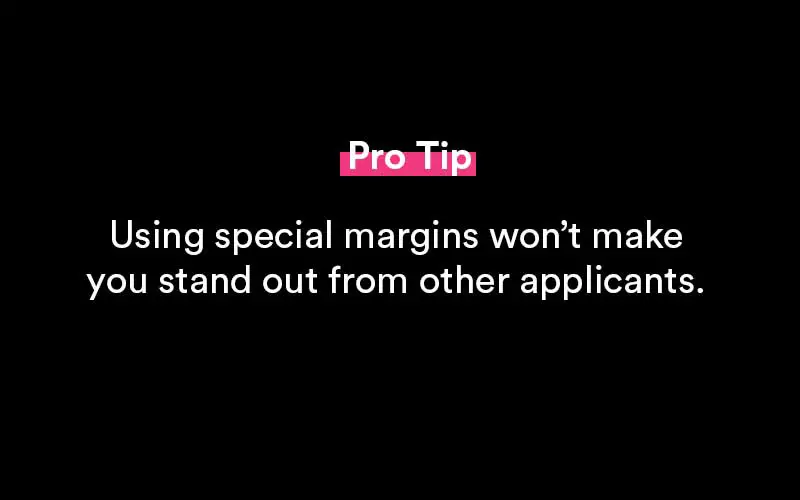
Proper margins for printed resumes
Printed resumes also have a specific format. In this case, you want to present a resume that looks right.
When you interview for a job or turn in a resume on a job hunt, this is essential. You are sharing your work history for previous employers and sharing things about yourself.
A balanced resume that is printed will have text to the left for most pieces, rather than center-aligned text alignment. You will also need to make margins consistent on top, bottom, left, and right settings.
When you are printing a paper resume, you may need to adjust your formatting so that your resume looks right.
Start with one inch and left-aligned word formatting but just know that you may need to make adjustments when printing.
You want to avoid too much white space and you want your resume format to look nice in print.
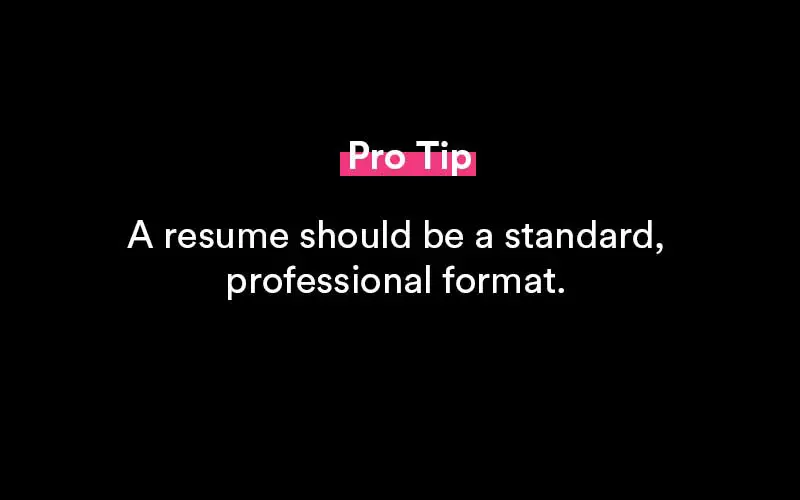
Tips for Printed Resumes
Check out these tips to help with your printed resume
- Be sure your font size is readable without squinting and not huge.
- Use a standard font that isn't outdated (Times New Roman never fails).
- Be sure to always use proper alignment and margin space.
- Check it over to be sure nothing is cut off from the edges.
- Be sure the contents match your job application details.
- Resume margins and formatting are adjustable to make it look just right.
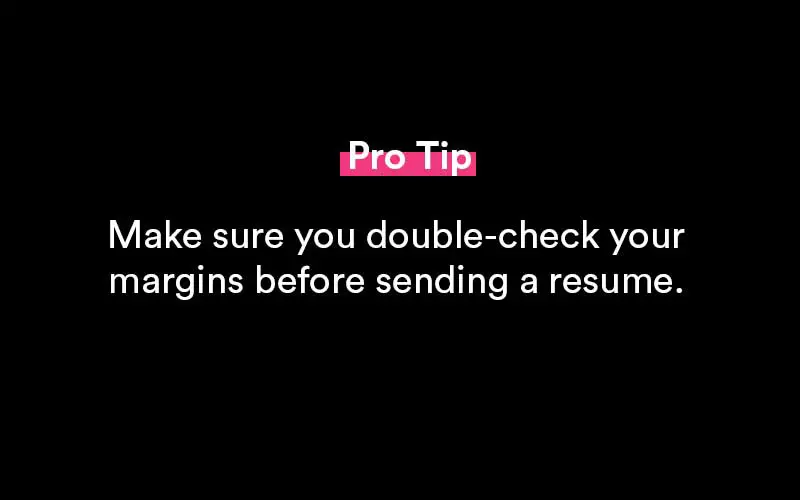
Resume Margin Tips
Setting your resume margins seems like it should be standard.
While there is a traditional standard, just know that your resume can be tweaked to make it "look right".
Avoid a lot of bullet points, although it is ok to use some. You just want to keep everything minimal but succinct.
Even a creative resume will fall into these standards on the margin for the most part.
You can adjust your margin to get the fit right but always be sure that nothing is cutting off and the page isn't overwhelming.
How Long Should My Resume Be?
While you're working on your resume, be aware that there are different standards and expectations for different resumes.
Here are some varying categories so you know where your resume falls.
Single Page Resume
Use a single-page resume for the following job types and job accommodations, if at all possible.
- Entry level job positions.
- Experience level is less than 10 years.
- A recent graduate pursuing their first job in the field.
- Internship job applicants.
- Changing industries or fields of profession.
Two Page Resumes
Check out the following list to determine whether the proper resume should be two pages.
- Experience level is 10+ years.
- Technical skills or technical knowledge is listed for the job.
- You are a mid-level candidate with 5-10 years of related experience.
Three Page Resume
Some resume types, like a professional resume, actually need to have 3 pages.
Check out these proper allocations.
- You have leadership roles and accomplishments to share.
- The position or your role is senior-level or executive in nature.
- Academic or science-related fields.
- In the event you need to share licenses, publications, professional courses, patents, or speaking accomplishments.
Popular Resources

Featured
35+ Phone Interview Questions & Best Sample Answers
Phone interviews have become a core part of the process when attempting to find a secured placement for an open position. Companies receive massive responses from potential candidates for any..

Featured
12+ Best Questions To Ask A Recruiter
Concerning a job search, you might receive numerous offers from your recruiters. Before you choose one, you need to assess all the conditions, for which it is vital that you know everything associated with the offered position..

Featured
Answering "What Makes You Unique" In A Job Interview
Answering this question during a job interview requires more than knowing why you are unique as an individual. Yes, the true scientific answer is made up of two main components: your..

Featured
250+ Ice Breaker Questions for Life
An ice breaker question is a question that’s asked from one person to another person in order to act as a conversation starter. It brings a connection...

Featured
10 Best Answers to "What Motivates You?"
Open-ended questions like “What motivates you?” can elicit a deer-in-the-headlights reaction from job candidates if they are unprepared. It’s a broad question and can leave the interviewer..

Featured
Answering "How Did You Hear About This Position" In An Interview
A lot of interviewers ask this question - how did you hear about this position? This way they can judge you if you are a passive or an active job seeker..

Featured
8 Best Thank You Emails After an Interview (Samples, Free Templates)
Writing a thank you note after an interview says a lot about you as a potential employee. Most notably, it says that you care about the opportunities presented..

Featured
Writing a Resignation Letter (How To Write It, Samples)
Writing the perfect letter of resignation is more of an art than it is a science. And we’re going to cover how to master that art form in this full guide..

Featured
How to End a Letter (Example Salutations, Sign Off's)
Knowing how to end a business note or email is an important skill to develop. It helps portray a sense of confidence, respect and tone to your message..
